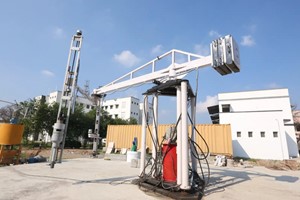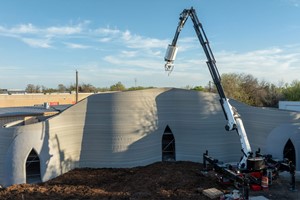Today’s construction market is highly dynamic and fast-paced. As a result, construction projects around the world are becoming increasingly complex with shorter project completion times, increasing customer quality expectations, and higher numbers of teams, trade professionals, site managers, and subcontractors working on the same job site simultaneously.
This type of work environment demands new ways of coordinating to ensure team members operate smoothly and efficiently. With multiple construction teams operating on the same sites at the same time, many coordination challenges need to be overcome for these projects to run smoothly.
Effective coordination between all parties involved in a project can significantly reduce project risk, reduce defects and increase overall efficiency. When your organization’s coordination efforts are not streamlined, however, it can often result in budget overruns, missed deadlines, reduced build quality, and an overall decrease in site operational performance. Utilizing a project management plan, construction management software, or site management tool to manage your day-to-day construction site workflows can help businesses avoid these pitfalls.
How can BIM management software improve on-site collaboration?
According to the UN, the world’s population is projected to reach 9.7 billion by 2050. The global architecture, engineering, and construction industry must look to smarter, more efficient ways of designing and building not only to keep up with global demand but also to help create smarter, more resilient spaces. BIM not only makes design and construction teams more efficient, but it also allows them to capture the data they generate during the process for use in operations and maintenance. As a result, BIM software and management tools are becoming increasingly prevalent in architecture, engineering and construction industries around the world.
There are five key principles that you can use BIM to improve successful on-site collaboration in your projects. Read on below to find out how they can help you in your next project:
1.Improved collaboration and communication
BIM has improved collaboration and communication for construction teams in a number ways. Firstly, it has allowed for clearer communication between project stakeholders, as all relevant information can be stored in a central location and accessed by everyone involved in the project. Secondly, it has made it easier to coordinate work between different disciplines, as all team members can see what everyone else is working on. Finally, BIM has helped to improve the quality of information exchanged between project stakeholders, as it can be used to verify that data is accurate and up to date.
- Reduced client risk
When it comes to construction projects, there is always some risk involved for the client. However, with BIM (Building Information Modelling), this risk is greatly reduced. BIM is a process that allows for better planning and coordination of construction projects, which leads to fewer mistakes and a smoother overall process. This in turn reduces the risk for the client, as they can be confident that the project will be completed to a high standard and within the agreed time frame.
- Increased productivity and team output
Construction markets are constantly changing and evolving, making it difficult for construction professionals to keep up with the latest information and technologies. However, by using Building Information Modelling (BIM), construction professionals can be sure that they are always using more efficient planning methods and the latest building plans.
BIM also allows construction professionals to simulate different construction scenarios, which can help to identify potential problems before they occur. This can save time and money, as well as improve safety on construction sites. Overall, BIM provides several benefits for construction professionals, including more efficient planning, better communication, and the ability to identify potential problems before they occur.
- Improved scheduling
BIM has helped to schedule in many ways. One way is by providing a more accurate and complete model of the project. This allows for better coordination between different trades and disciplines and results in a more efficient and effective construction schedule. Additionally, BIM can be used to simulate the construction process, which can help identify potential bottlenecks and optimize the schedule.
Another way BIM has helped scheduling is by providing a more transparent view of the project, which can help all stakeholders make better-informed decisions. Finally, BIM can help track progress and identify issues in real time, which can help keep the project on track and avoid delays.
- Predictability
The use of BIM has been shown to improve project predictability in the construction process, as well as improve project outcomes. The construction industry is highly competitive, and the use of BIM can give project teams a significant advantage. BIM can be used to predict and manage construction costs, schedules, and programs, as well as help resolve construction disputes.
The benefits of BIM are well known, and the use of BIM is growing rapidly in Australia & other countries. More and more project teams are recognizing the value of BIM and are using it to improve predictability and deliver better project outcomes.
How can BIM modeling benefit site construction teams?
Building Information Modelling (BIM) creates a virtual prototype of projects, allowing everyone to see every detail of a space. Using BIM management software provides a comprehensive opportunity to coordinate work packages through an accurate 3D model world, as well as allows teams to identify potential unforeseen issues, defects, and problems before they occur.
Site managers and contractors can anticipate challenges and ensure the entire build process runs smoothly from start to finish by taking a model already developed at the construction or earlier design stage and collaboratively developing it through to the finishing stages.
Key advantages of using BIM management on construction projects can include:
- better coordination among all stakeholders
- better coordination between the design and construction phases
- greater visibility across all stages of the site progress
- higher quality building outcomes
- reduced costs and faster project completion time
- keep projects on schedule with real-time design collaboration
- control project document access with multi-level permissions and data exchange management
- increased productivity due to automation or digitization of repetitive tasks














